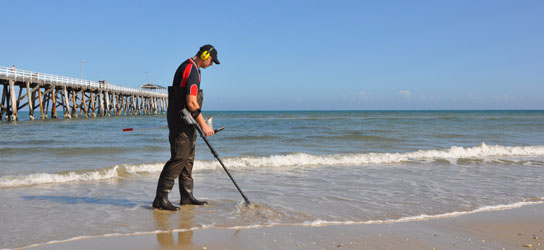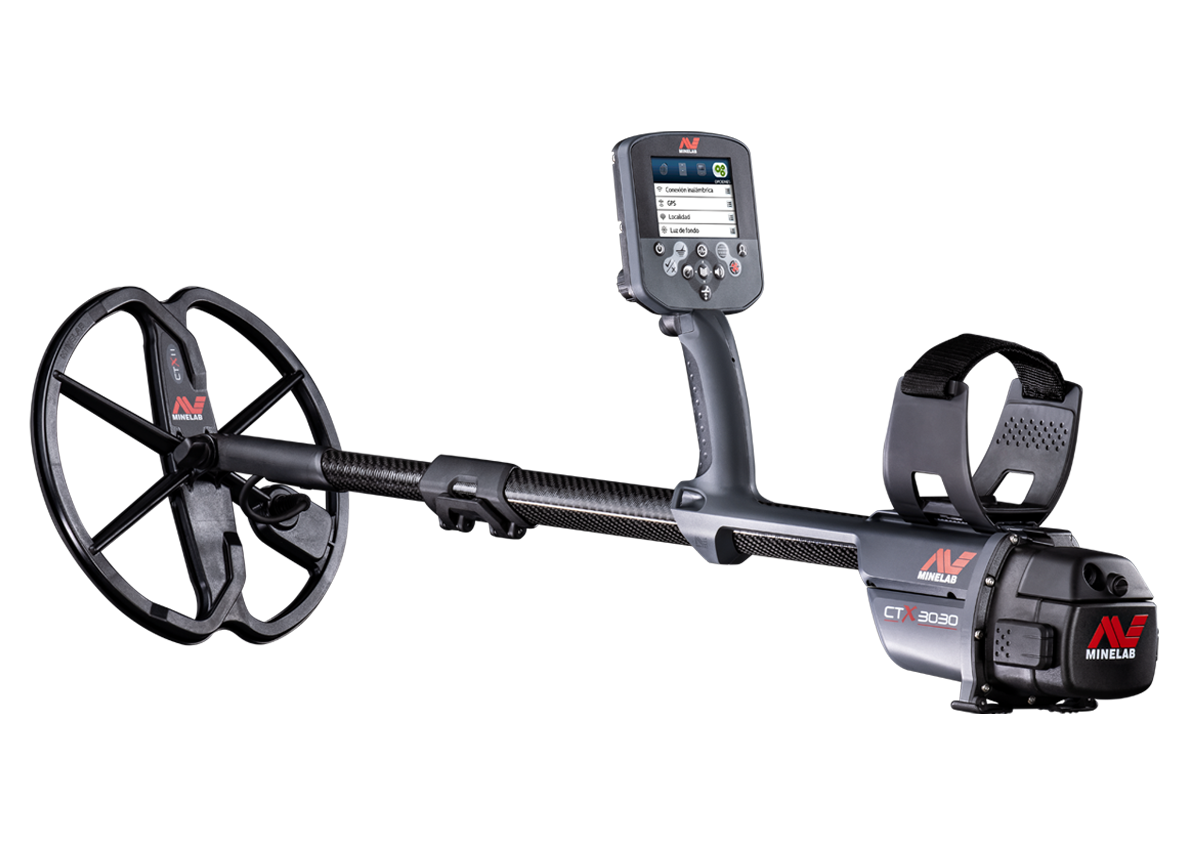Everyone knows how well FBS (and now FBS 2) technology works on the wet sand, and on saltwater beaches, but recently I have noticed a little bit of head scratching among CTX 3030 users in regards to Sensitivity options – Auto and Manual. Some operators swear by running in Auto Sensitivity on the beaches, only to be told by others that Minelab’s advice is to NOT use Auto on salty beaches. Well to set the record straight, yes it’s true that in general Minelab don’t recommend the use of Auto Sensitivity on saltwater beaches and I’ll get to the reason shortly, but before I go on I have to say, if you have tried it and you are happy with the way your CTX 3030 performs, then by all means continue to use Auto.

Now, to know why Auto Sensitivity is not generally recommended on beaches, I’d like to explain briefly how Auto works. As you are sweeping, the CTX 3030 automatically measures the ground, and uses this information to set the Sensitivity to the maximum stable setting. Now it is important to know, that the detector can accurately analyse the signal from positive or magnetic mineralisation, but does a poor job on conductive ground, which saltwater beaches are. What happens is that the detector will continue trying to gather ground information, but a primarily conductive ground response can cause the Sensitivity setting to be inconsistent, leading to an incorrect setting. So as the detector struggles to read the conductive ground accurately, the operator ends up with a noisy detector, due to a Sensitivity setting that is too high.
The reverse can also happen, and due to incorrect ground information being read, the detector sets the Auto Sensitivity conservatively low, i.e. 16, whereas if set manually, the operator would find that the detector is still working well on a Sensitivity setting of say, 21. In this instance, the operator who is working in Manual Sensitivity would be getting better performance. Now, not all beaches are the same, and some areas contain high levels of black sand, or other mineralisation which is positive. On these beaches, there is enough positive or magnetic mineralisation being read by the detector to set the correct Sensitivity level, so Auto Sensitivity should work quite well. Every location will vary, so it does pay to experiment. To summarize, for optimum performance here are my recommendations:
- Normal saltwater beach (no black sand) = Manual sensitivity (set to maximum stable setting)
- Saltwater beach with low levels of black sand = Manual Sensitivity still preferred but experiment
- Saltwater beach with high levels of black sand or positive mineralisation = Auto Sensitivity
NOTE: This information also applies to the E-TRAC
Nenad Lonic





















Comments
Perhaps you can help me with my local conditions regarding sensitivity settings. I'm running in Auto up to +3 and the reccomended sens levels I get (all over my area) run very low say from 3 to maybe 12. Auto +3 will go as high as the 15 to 22 range but generally runs in the mid teens.
So I guess the machine telling me I've got extremely high mineralization? So far I've not recovered any coins below say 6.5" and I'm thinking it's a result of the high mineralization and resultant Auto sens levels. I've been reading accounts of deep coins being dug but most of those are with sensitivity levels in the mid 20's.
Any suggestions?
I assume you are on a beach? If so try manual sensitivity, and progressively increase it while searching, and see how far you can set it before the CTX 3030 starts to produce false signals.
However, if you are inland, then a very low Auto Sensitivity setting is usually an indicator of high "positive" type mineralisation. In these conditions you should try the manual Ground Balance, as this is designed to optimise performance in really bad soils.
Also, don't forget the basics: make sure your coil connector is done up firmly, and regularly clean out your coil skid plate.
Regards, Nenad